Inhoudsopgave
ToggleIn the land of Nanyue, China, there is a natural wonder carved by nature – Zhaoqing Dinghushan. The LS VISION team set foot on this magical land for a meaningful team-building activity. Here, LS VISIE has always adhered to the “family culture” team, allowing each member to experience the deep love in this group. The “Dinghushan” trip not only made our family members deeply impressed by the magnificent scenery of nature but also deeply experienced China’s profound cultural heritage and historical stories.

The natural beauty of Dinghushan: the brilliant emerald on the Tropic of Cancer
Dinghushan, located in the northeast of Zhaoqing City, Guangdong Province, is famous for its unique geographical location and rich biodiversity. The total area is 11.33 square kilometers, and the highest point, Jilong Mountain, is 1000.3 meters high. Because most of the places where the Tropic of Cancer passes through on the earth are deserts or dry grasslands, only the Dinghushan area is covered with green vegetation and is known as the “Emerald on the Tropic of Cancer”.
The LS VISION team was deeply impressed by the magnificent scenery of nature here. Dinghushan is composed of several mountains in the same direction. The mountains gradually decrease from northwest to southeast and can be roughly divided into four levels according to height. The climate here is a subtropical monsoon climate with long sunshine and abundant solar radiation. There is neither severe winter nor scorching heat, and it is warm all year round. Dinghushan is rich in plant resources. The nature reserve covers an area of more than 17,000 acres, of which more than 2,000 acres are virgin forests. It is lush and dense with a complex structure. It is one of the few special forest types in the world and is known as the “living natural museum”.
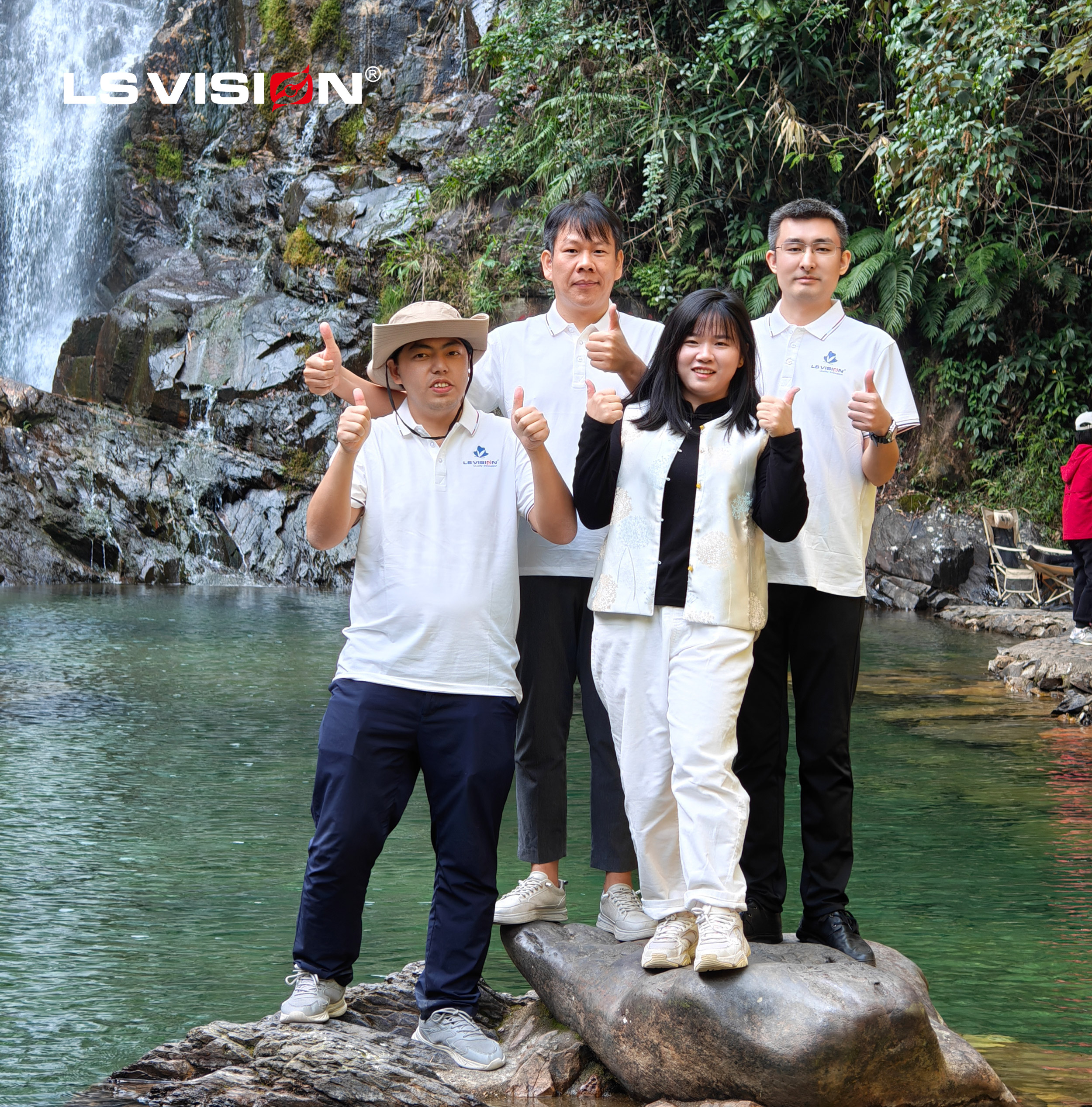
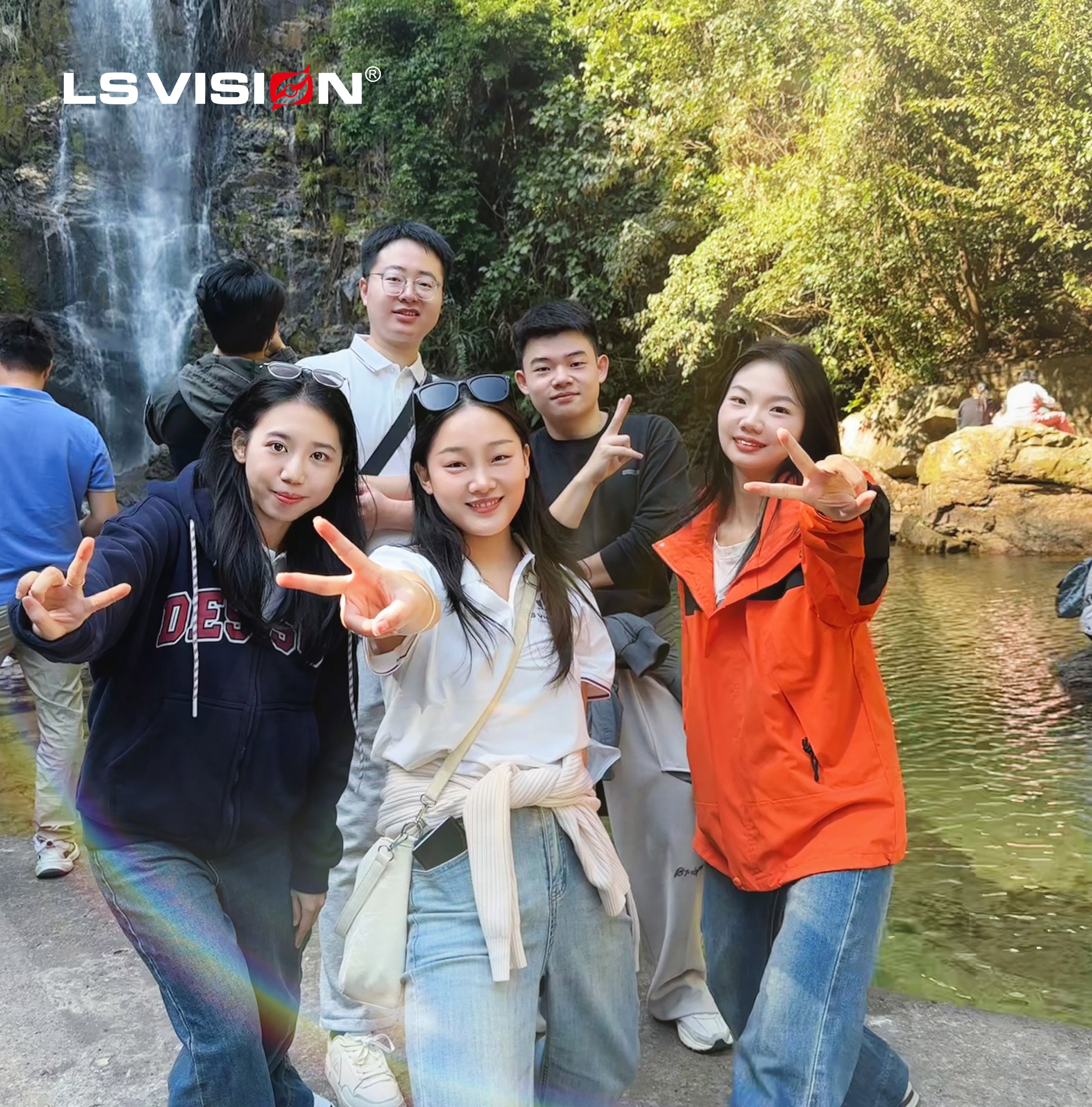
The cultural heritage of Dinghushan: witness of history
Dinghushan not only has beautiful natural scenery but also contains a profound cultural heritage. Qingyun Temple is located at Lianhua Peak in the Tianxi Scenic Area of Dinghu Mountain. It is one of the four famous temples in Lingnan. It was built in the sixth year of Chongzhen in the Ming Dynasty (1633). The ancient temple was built on the mountain, with seven levels and five halls. It faces west and east, and the corridors are crisscrossed. The cultural relics in the temple are the big bronze bell, the thousand-person pot, the jade Buddha statue, the plaque of “Wanshou Qingyun Temple” bestowed by Empress Dowager Cixi, and the throne bestowed by Shang Kexi, the King of Pingnan. There is also a white tea tree with a tree age of more than 350 years in the temple, which is a gift from nature. We live on the same earth. President Xi Jinping expressed that green mountains and clear waters are gold and silver mountains. So we all have the gift of caring for nature and making the world a green and environmentally friendly environment.
Baiyun Temple is located at the foot of Yunding Peak in the Yunxi Scenic Area of Dinghu Mountain. It was built during the Yifeng period of the Tang Dynasty (676-679) by Master Zhichang, a disciple of Huineng, the Sixth Patriarch of Zen Buddhism. It was named because it is often surrounded by clouds and mist. It is the oldest temple in Dinghu Mountain. It has been rebuilt and destroyed many times. It was renamed Dinghu Ancient Temple after being rebuilt in the 39th year of Wanli in the Ming Dynasty (1611). In 1979, it was restored to an antique building according to its original appearance.
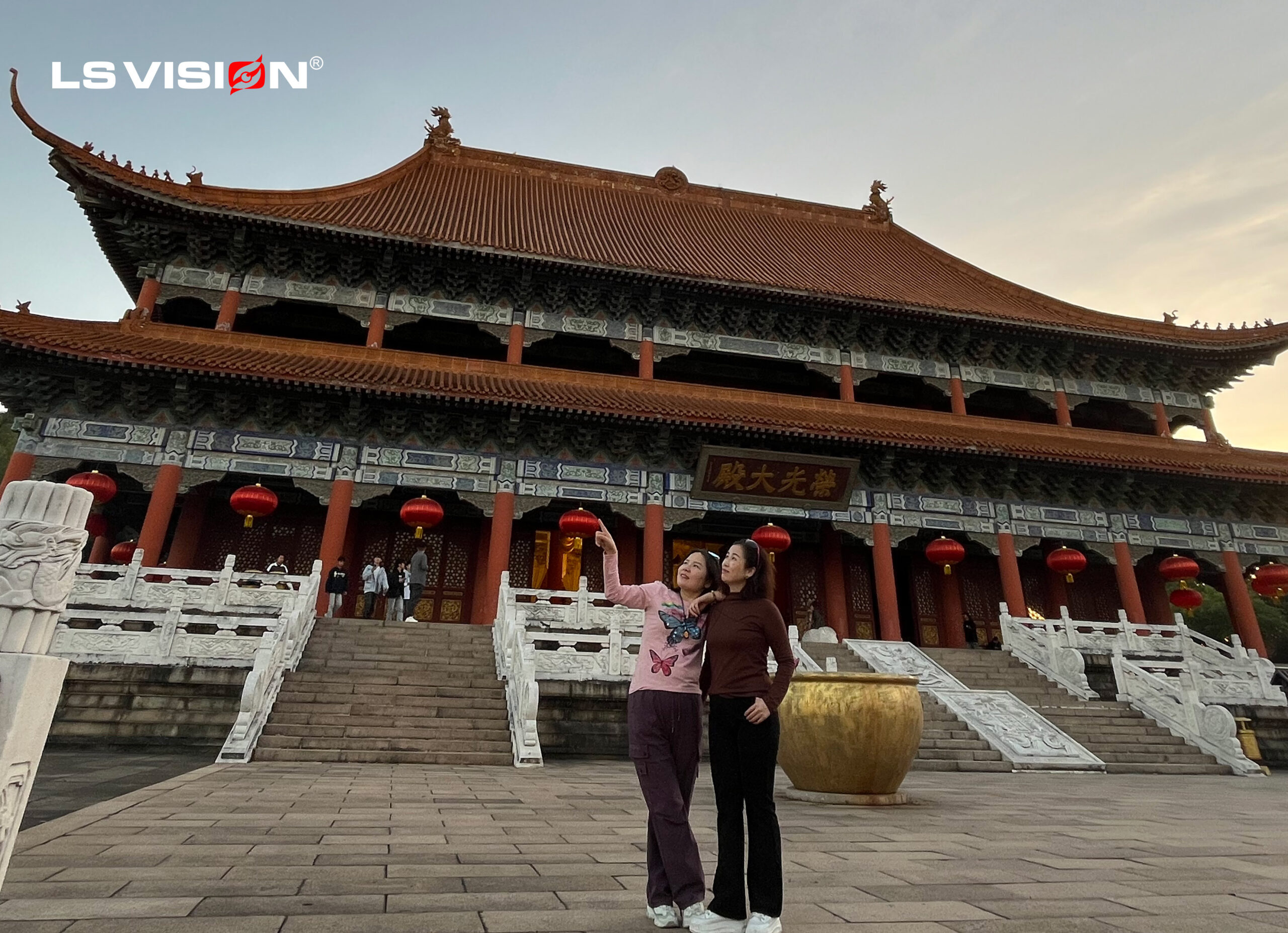
LS VISION’s pride and mission: to promote SOLAR CAMER to the world
LS VISION has always been proud of being Chinese and is committed to promoting our green and innovative SOLAR CAMER to the world. We hope that through SOLAR CAMER, people all over the world will adhere to green environmental protection, respect the gifts of nature, and love the environment so that people all over the world can know China’s beautiful rivers and mountains and feel the dual charm of China’s nature and culture. During the team building trip to Dinghu Mountain, we not only deepened our understanding of Chinese culture but also strengthened our sense of mission: for a better world.
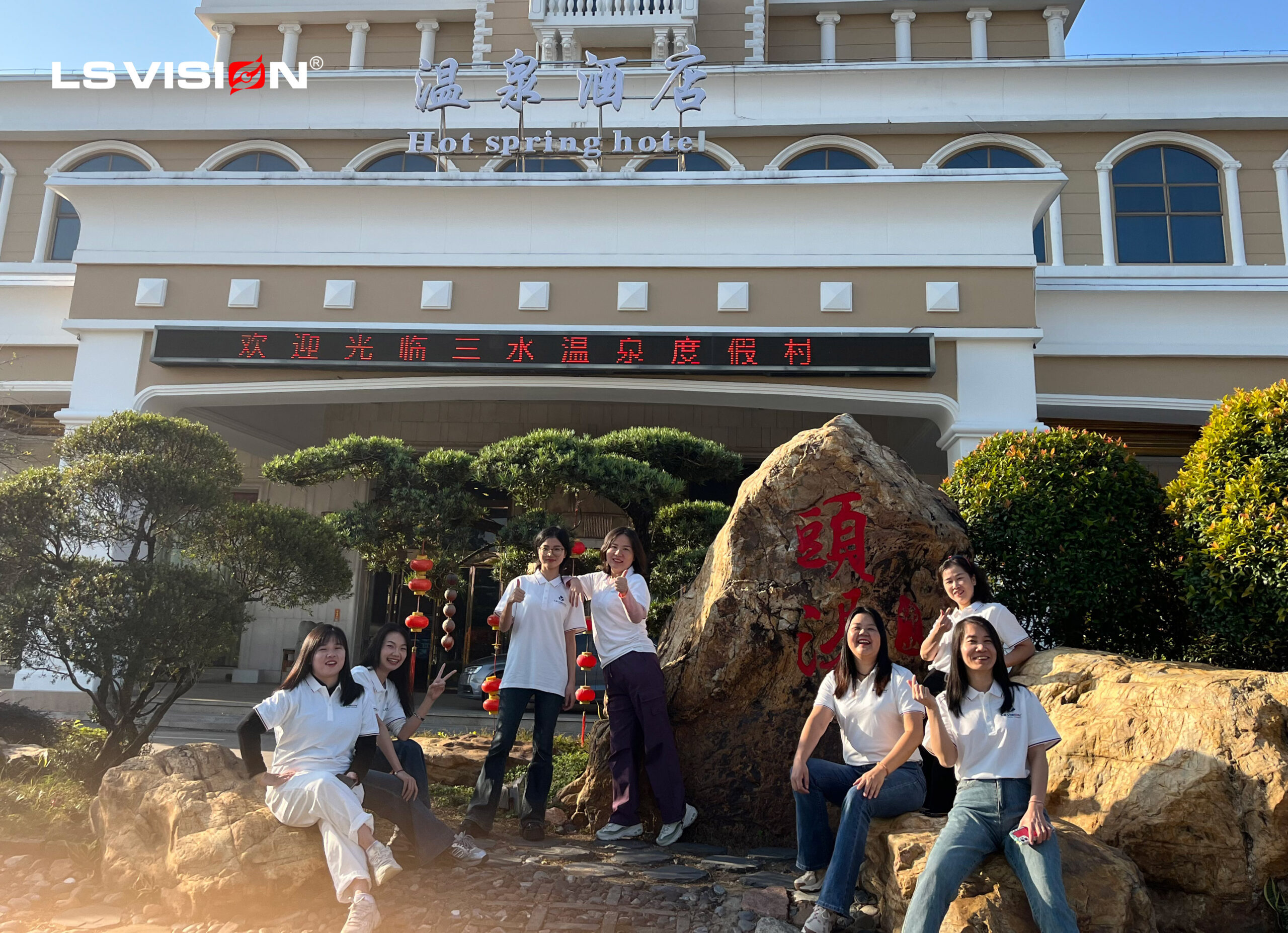
LS VISION prays to the tripod “bringing good luck, happiness, and health to you”
The tripod has been a symbol of power and status since ancient times. According to historical records: “The tripod has three feet and two ears, and is a precious vessel for five flavors.”
It was originally used as a utensil for cooking and holding food, and later gradually evolved into a symbol of state power. In ancient times, the tripod was a symbol of the state and power. Dayu “collected the gold of the nine herdsmen and cast nine tripods, each of which resembled the nine states”, marking the establishment of the Xia Dynasty.
During the Spring and Autumn Period, Duke Zhuang of Chu asked Gongsun Man, an envoy of King Ding of Zhou, about the size and weight of the tripod, making the term “asking about the tripod” a classic saying that covets state power or generally refers to trying to gain authoritative dominance.
The tripod also plays an important role in Fthe eng Shui layout. The ancients believed that the patterns on the tripod had the effect of suppressing evil spirits, and sometimes legal provisions were engraved on the tripod to show the solemnity of the law.
After the change of dynasties, the first thing the newly enthroned king did was to cast a tripod and promulgate laws to symbolize the beginning of a new era and express auspiciousness. Therefore, the change of dynasties is called a tripod.
The tripod is not only a witness to history, but also a good wish for the future. Ancient Chinese says: “Ding is Yuanji, the first auspicious”, which means that as long as the Ding hexagram is asked, it is very auspicious, auspicious, and smooth. I hope to bring the auspiciousness and happiness of the tripod culture to you.
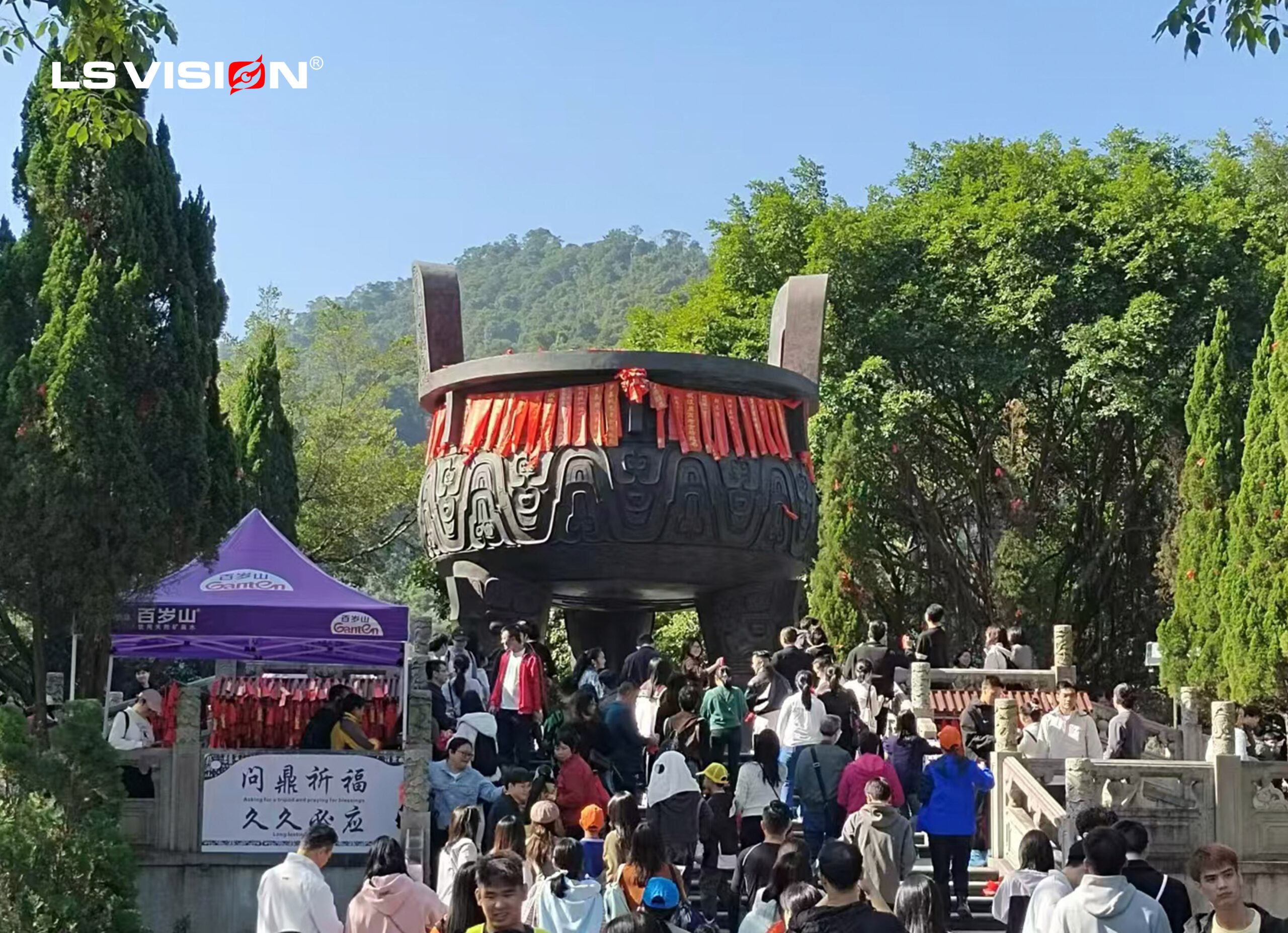
Welcome friends from all over the world to visit China and LS VISION
LS VISION sincerely welcomes friends from all over the world to visit China and experience the natural beauty and profound culture of China. Dinghu Mountain is just a microcosm of China’s many natural and cultural treasures. Here, you can breathe the purest negative ions and enjoy a pleasant journey. LS VISION will continue to take you to appreciate more natural wonders in China and even the world.
Through this team-building activity, the team members of LS VISION not only strengthened the team cohesion but also deeply felt the pride of being Chinese. We will continue to work hard to let the world witness the strength and beauty of China. In this ancient and vibrant land, we coexist harmoniously with nature, have in-depth dialogues with culture, and jointly write a glorious chapter belonging to LS VISION.


